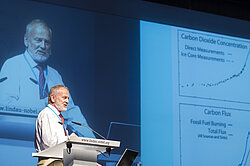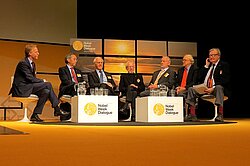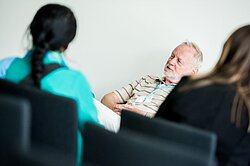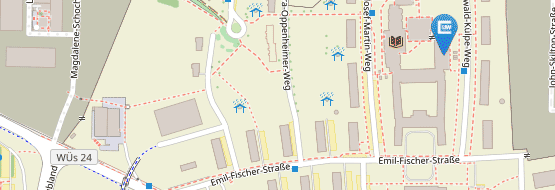Hartmut Michel
Scholar of the month: Hartmut Michel
* 18.07.1948 in Ludwigsburg
1969 Study in Tübingen and Munich
1975 Diploma in Biochemistry
1977 Doctorate in Würzburg
1979 Scientific assistant and leader of a research group at the Max-Planck-Institute for Biochemistry
1986 Habilitation in Munich
1987 Director at the Max-Planck-Institute for Biophysics (Department of Molecular Membrane Biology)
1988 Nobel Prize for Chemistry, together with Johann Deisenhofer and Robert Huber
1989 Extracurricular Professor for Biochemistry in Frankfurt
Also in the month of march the team of the Universitätsarchiv Würzburg wants to honour another Nobel laureate in their “Scholar of the month”-Series. This times we will present you the Biochemist Hartmut Michel, who was awarded with the Nobel Prize for Chemistry in 1988.
The beginnings of an outstanding scientific career
After finishing his military service, Hartmut Michel began his study of Biochemistry at the University of Tübingen in 1969. Michel himself later described his study as comprehensive and coined with an impersonal relationship between lecturers and students. Only the work at the biochemical laboratories of the University of Munich and at the Max-Planck-Institute in the years 1972/73 awakened his enthusiasm for scientific research. In 1974 he crafted his thesis under the supervision of the Biochemist Dieter Oesterhelt at the Friedrich Miescher-Laboratory of the Max-Planck-Society in Tübingen.
Michel’s time in Würzburg
In 1975 Michel followed Dieter Oesterhelt to Würzburg, where he finally received his doctorate two years later. His dissertation deals with the topic of the electrochemical proton gradient of the Halobacterium halobium and its relation to the intracellular levels of ATP, ADP and phosphate. During researching, Michel discovered, that the delipidated bacteriorhodopsin, when stored in a freezer, will yield solid, glass-like aggregates. From thereon he was convinced that it was possible to create crystalized membrane proteins, an assumption that was considered impossible at this time. In April 1979 he successfully obtained his first real three-dimensional crystal of bacteriorhodopsin.
Scientist and Nobel Laureate
In 1979 Michel followed Dieter Oesterhelt once again, this time to the Max-Planck-Institute in Martinsried, where he became the leader of a research group. There, he also met Robert Huber and Johann Deisenhofer, his later Co-Laureates. Michel succeeded in the crystallization of several membrane proteins, especially in the year 1981 of the central complex, which is responsible for the primary separation of electronic charges and for the transport of electrons over the photosynthetic membrane during the Photosynthesis. This complex, the so called reaction centre of the photosynthesis, was isolated by him from the purple bacteria Rhodopseudomonas viridis. In the following time, a close cooperation and friendship started to evolve between Michel and Johann Deisenhofer. Hartmut Michel became the leader of a department and director of the Max-Planck-Institute for biophysics in Frankfurt. Together with Robert Huber and Johann Deisenhofer he was awarded the Nobel Prize for Chemistry in 1988 “for the determination of the three-dimensional structure of a photosynthetic reaction centre.“[1]
[1] https://www.nobelprize.org/prizes/chemistry/1988/summary/





